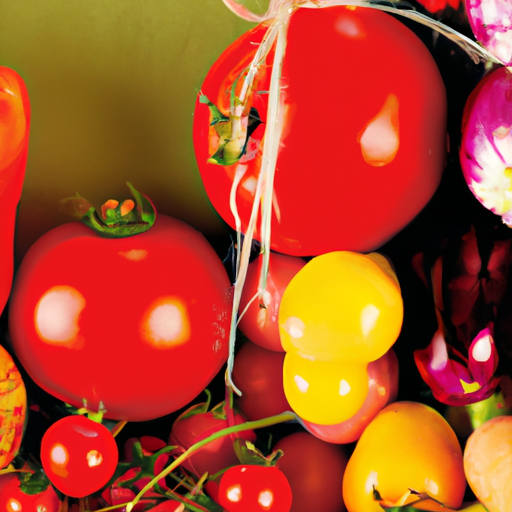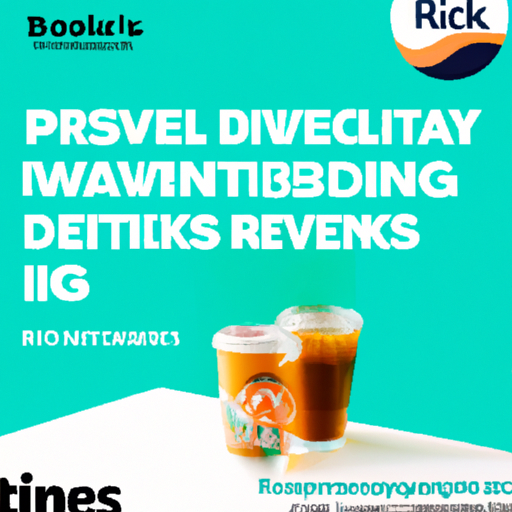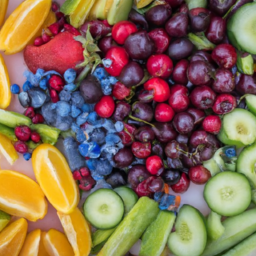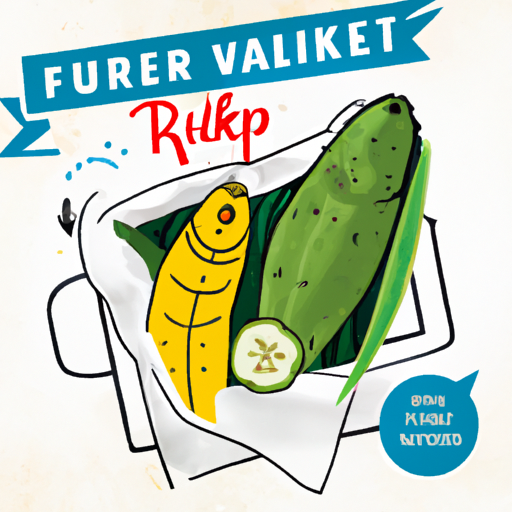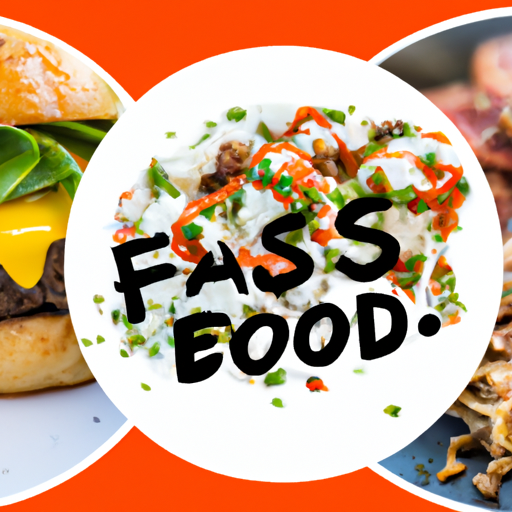Food And Beverage Industry Trends
If you’re a foodie or someone who loves staying up-to-date with the latest culinary crazes, then this article is for you. Get ready to discover the hottest trends sweeping through the food and beverage industry. From plant-based alternatives taking over menus to sustainable packaging solutions, these trends are not only changing the way we eat but also shaping the future of the industry. So, grab a seat and prepare to tantalize your taste buds as we explore the exciting world of food and beverage industry trends.
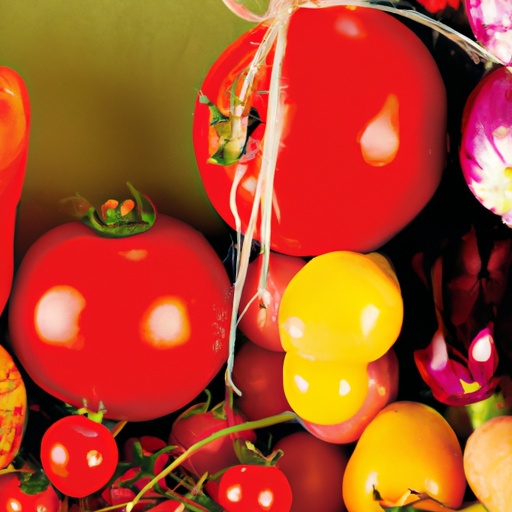
Table of Contents
Increased Demand for Healthy and Sustainable Options
Growth of organic and natural food products
In recent years, there has been a significant increase in the demand for organic and natural food products. Consumers are becoming more conscious about what they eat and are opting for healthier options. Organic food products are produced without the use of synthetic chemicals, pesticides, or genetically modified organisms (GMOs). They are often perceived as being more nutritious and beneficial to both human health and the environment. As a result, many food companies have started offering a wide range of organic and natural products to cater to this growing consumer demand.
Rise of plant-based and alternative protein options
Another trend that has been gaining traction in the food and beverage industry is the rise of plant-based and alternative protein options. With an increasing number of individuals adopting vegetarian, vegan, and flexitarian diets, there is a growing demand for meat and dairy alternatives. Plant-based burgers, sausages, and milk substitutes made from ingredients like soy, pea protein, and nuts have become increasingly popular. These products not only provide a sustainable and cruelty-free alternative to animal-based products but also offer a healthier choice for consumers.
Focus on sustainable sourcing and packaging
sustainability has become a key focus for many food and beverage companies. Consumers are not only concerned about the nutritional value of their food but also about the environmental impact of its production and packaging. As a result, there has been a shift towards sustainable sourcing and packaging practices in the industry. Companies are sourcing their ingredients from local and organic farmers, supporting fair trade practices, and implementing environmentally-friendly packaging solutions. This trend is driven by the increasing consumer awareness of the impact of their food choices on the planet and their desire to support brands that align with their values.
Technology Advancements and Innovation in Food Production
Automation and robotics in food manufacturing
Advancements in technology have revolutionized food production processes. Automation and robotics are playing a crucial role in increasing efficiency, reducing costs, and ensuring food safety in manufacturing facilities. Robots can perform repetitive tasks with precision and speed, eliminating the risk of human error. They can also handle sensitive food products without compromising quality or safety. As a result, food companies are increasingly adopting automation and robotics to streamline their production processes and meet the growing demands of the market.
Digitalization of supply chain management
The digitalization of supply chain management has greatly improved the efficiency and transparency of the food industry. With the help of advanced software and technology, companies can track every step of the supply chain, from sourcing ingredients to delivering the final product to the consumers. This not only enables better inventory management and reduces wastage but also enhances traceability and ensures food safety. Digitalization also allows for better communication and collaboration between different stakeholders in the supply chain, leading to seamless operations and improved customer satisfaction.
Rapid growth of food delivery apps
the rise of food delivery apps has revolutionized the way consumers access their favorite food and beverages. With just a few taps on their smartphones, consumers can order a wide variety of cuisines and have them delivered to their doorstep. This convenience has led to the rapid growth of food delivery apps, with companies like UberEats, DoorDash, and Grubhub dominating the market. Food establishments, both big and small, are partnering with these apps to expand their customer base and increase their revenue. This trend has not only transformed the food industry but has also changed the dining habits of consumers.
Shift towards Personalized and Customizable Food Experiences
Customizable menus and ingredient options
Consumers today crave personalized experiences, and the food and beverage industry is no exception. Many establishments are now offering customizable menus and ingredient options, allowing customers to create their own unique meals. From build-your-own salad bars to personalized pizza toppings, these options cater to individual preferences and dietary requirements. This trend not only enhances customer satisfaction but also creates opportunities for innovation and creativity in the industry.
Emergence of food subscription services
food subscription services have gained popularity in recent years, offering customers the convenience of receiving regular deliveries of their favorite meals or ingredients. These services allow consumers to try new dishes and cuisines without the hassle of shopping for ingredients or preparing meals from scratch. From meal kits that provide pre-portioned ingredients and recipes to subscription boxes that offer a variety of snacks and beverages, there are options to suit every taste and lifestyle. The emergence of food subscription services has transformed the way people think about meal planning and has made it easier for them to enjoy a diverse range of foods.
Use of AI to personalize food recommendations
Artificial intelligence (AI) has made its way into the food and beverage industry, offering personalized recommendations and suggestions to consumers. Many platforms and apps use AI algorithms to analyze a user’s preferences, dietary restrictions, and past orders to provide tailored food recommendations. Whether it’s suggesting new recipes based on a user’s taste or offering recommendations for restaurants and cafes based on their preferences, AI is enhancing the food discovery experience. This trend not only makes it easier for consumers to find and enjoy food that suits their individual tastes but also helps food establishments improve customer engagement and loyalty.
Increased Focus on Food Safety and Quality Assurance
Implementation of blockchain technology for traceability
Food safety and traceability have always been important concerns for consumers. With the rise of foodborne illnesses and product recalls, there is an increasing demand for transparency and accountability in the food industry. Blockchain technology has emerged as a potential solution to these challenges. By using a distributed ledger system, blockchain enables secure and transparent record-keeping of every step in the supply chain. This enhances traceability, making it easier to identify the source of a food safety issue and take corrective actions promptly. Blockchain technology also strengthens consumer trust by providing them with reliable information about the origin and quality of their food products.
Stringent regulations and standards
To ensure food safety and protect consumers, governments around the world have implemented stringent regulations and quality standards for the food and beverage industry. These regulations cover various aspects, including food labeling, hygiene practices, and quality control procedures. Compliance with these regulations is not only essential for maintaining consumer trust but is also a legal requirement. Food companies are investing in robust quality assurance systems and implementing strict protocols to meet these regulations. This ensures that the food products reaching consumers are safe, of high quality, and meet the specified standards.
Rise of food safety audits and certifications
Food safety audits and certifications have become an integral part of the industry, verifying that companies meet the necessary standards and regulations. These audits are conducted by third-party organizations that assess the food safety practices and procedures followed by food establishments. Certifications like HACCP (Hazard Analysis Critical Control Point), ISO 22000, and SQF (Safe Quality Food) are recognized globally and signify a company’s commitment to food safety and quality. The rise of these audits and certifications has helped create a culture of continuous improvement and accountability in the industry, ensuring that consumers can trust the food products they purchase.
Innovative Food and Beverage Packaging Solutions
Development of biodegradable and compostable packaging
The food and beverage industry is actively exploring sustainable packaging solutions to reduce its environmental impact. One of the most significant developments in this area is the development of biodegradable and compostable packaging materials. These materials are designed to break down naturally over time, reducing the accumulation of plastic waste in landfills and oceans. From bioplastics made from plant-based sources to packaging made from agricultural waste, innovative solutions are emerging to replace traditional single-use plastics. This shift towards biodegradable and compostable packaging aligns with consumer demands for more sustainable and eco-friendly options.
Use of smart packaging technology
Smart packaging technology is revolutionizing the way products are packaged, stored, and consumed. This technology includes features such as temperature and freshness indicators, interactive labels, and QR codes that provide additional product information. These innovations help ensure product integrity, improve shelf life, and enhance consumer experience. For example, smart packaging can monitor and communicate the freshness of perishable products, reducing food waste. It can also provide access to nutritional information, allergen warnings, and cooking instructions, making it easier for consumers to make informed choices. The use of smart packaging technology not only benefits consumers but also allows companies to differentiate themselves in the market.
Introduction of sustainable packaging materials
In addition to biodegradable and compostable packaging, there has been an introduction of sustainable packaging materials in the food and beverage industry. Companies are exploring alternatives to traditional packaging materials such as plastic and Styrofoam. For instance, some brands are opting for paper-based packaging made from responsibly sourced, renewable materials. Others are using innovative materials like bamboo, sugarcane, and mushroom-based packaging. These sustainable packaging materials not only reduce environmental impact but also provide an opportunity for brands to showcase their commitment to sustainability and attract environmentally-conscious consumers.
Expansion of Global and Ethnic Cuisine Options
Growing popularity of international cuisines
Globalization and increased travel have resulted in a greater appreciation and demand for international cuisines. People are eager to explore flavors and dishes from different parts of the world, seeking unique and authentic culinary experiences. This trend has led to the growth of international cuisine options in the food and beverage industry. From Mexican street food to Thai curries, consumers can now find a wide range of international dishes in their local neighborhoods. Restaurants and food establishments are adapting their menus to cater to this demand, providing consumers with an opportunity to savor the flavors of different cultures.
Demand for authentic ethnic food experiences
Alongside the expansion of global cuisine options, there is also a growing demand for authentic ethnic food experiences. Consumers are seeking dishes that are prepared and presented in a way that reflects the culture and traditions they originate from. This trend has given rise to a wave of ethnic food establishments that aim to provide an immersive gastronomic experience. From family-owned restaurants serving traditional recipes passed down through generations to street food vendors recreating dishes from their home countries, these establishments offer an authentic taste of different cuisines. The demand for authentic ethnic food experiences highlights the importance of cultural diversity and celebrates the rich culinary heritage of various communities.
Inclusion of diverse cultural food offerings
In line with the emphasis on cultural diversity, the food and beverage industry is increasingly focusing on inclusivity and offering diverse food offerings. This includes catering to the dietary preferences and requirements of different cultures and demographics. For instance, vegetarian and vegan options are now more readily available across cuisines. Gluten-free and allergen-friendly menus are becoming commonplace in many establishments. Inclusivity extends beyond dietary considerations, with many brands emphasizing diversity in their marketing campaigns and showcasing the multicultural backgrounds of their chefs and staff. By offering diverse cultural food offerings, the industry is embracing the richness of different food traditions and ensuring that everyone can find something that suits their tastes and needs.
Rise of Online and Virtual Food Experiences
Virtual cooking classes and food tastings
The COVID-19 pandemic has accelerated the trend of online and virtual food experiences. With restrictions on social gatherings and dining out, people have turned to virtual platforms to continue exploring their culinary interests. Virtual cooking classes and food tastings have gained popularity, offering participants the opportunity to learn new recipes and techniques from the comfort of their own kitchens. These virtual experiences often include live demonstrations by professional chefs, interactive Q&A sessions, and the chance to connect with other food enthusiasts. Virtual food experiences have not only provided a source of entertainment and education but have also opened up new avenues for chefs, culinary experts, and food influencers to share their knowledge and passion with a global audience.
Online food and beverage marketplaces
Online food and beverage marketplaces have become a go-to platform for consumers to discover and purchase a wide range of food products. These marketplaces bring together multiple vendors, offering diverse options in one convenient location. From farmer’s market produce to specialty gourmet products, consumers can find everything they need with just a few clicks. Online marketplaces also provide a platform for small-scale producers and local businesses to reach a wider audience and compete with larger brands. Furthermore, the COVID-19 pandemic has highlighted the importance of online food and beverage marketplaces, enabling consumers to access essential items and support local businesses while maintaining social distancing measures.
Increasing trend of food influencers and online reviews
Food influencers and online reviews have become influential factors in shaping consumer preferences and decisions. Social media platforms like Instagram and YouTube are teeming with food bloggers, vloggers, and influencers who share their culinary experiences, recipes, and dining recommendations with their followers. These influencers have significant reach and impact, often shaping food trends and driving consumer demand. Additionally, online reviews and ratings platforms provide consumers with insights and feedback from fellow food enthusiasts, helping them make informed choices about where to dine or what products to purchase. The increasing trend of food influencers and online reviews has transformed the way consumers discover, explore, and engage with the food and beverage industry.
Integration of Social and Environmental Responsibility
Implementation of eco-friendly practices in food production
The food and beverage industry is embracing social and environmental responsibility by implementing eco-friendly practices in food production. From sustainable farming methods to reducing food waste, companies are taking steps to minimize their environmental footprint. For instance, some companies are employing regenerative agriculture techniques that promote soil health and biodiversity. Others are adopting innovative technologies to decrease water usage and energy consumption during the production process. The implementation of eco-friendly practices not only contributes to the preservation of the environment but also addresses consumer concerns about sustainability, fostering a positive brand image and customer loyalty.
Support for local farmers and small businesses
Supporting local farmers and small businesses has become a significant aspect of social responsibility in the food and beverage industry. By sourcing ingredients locally, companies can reduce their carbon footprint and support local economies. This trend has also led to the growth of farmer’s markets and community-supported agriculture programs, allowing consumers to connect directly with local producers. Many establishments are incorporating locally sourced ingredients into their menus, highlighting the freshness and quality of these products. Supporting local farmers and small businesses enhances the sense of community and strengthens the local food system, creating a win-win situation for consumers, producers, and the environment.
Promotion of food waste reduction initiatives
Food waste has become a pressing issue globally, and the food and beverage industry is taking proactive measures to tackle this problem. Companies are implementing strategies to reduce food waste at every stage of the supply chain, from production to consumption. This includes implementing smart inventory management systems to minimize overstocking, donating surplus food to charity organizations, and encouraging customers to take leftovers home. Additionally, some companies are using food waste as a resource by turning it into compost or generating energy through anaerobic digestion. These food waste reduction initiatives not only contribute to environmental sustainability but also address social issues like hunger and food insecurity.
Health and Wellness as Key Marketing Strategies
Focus on functional and fortified food products
Health and wellness have become major concerns for consumers, and the food and beverage industry has responded by offering functional and fortified food products. Functional foods are those that provide additional health benefits beyond basic nutrition. They often contain added ingredients like vitamins, minerals, probiotics, or antioxidants that target specific health concerns. Fortified foods, on the other hand, are those that have been enriched with additional nutrients to address specific nutrient deficiencies. Functional and fortified food products cater to consumers looking to improve their overall well-being and meet their specific health goals.
Increased use of health claims and labels
With the growing interest in health-conscious choices, food and beverage companies are using health claims and labels to communicate the nutritional benefits of their products. Labels like “low sugar,” “gluten-free,” “organic,” and “high in fiber” help consumers make informed decisions about what they consume. Health claims and labels should comply with regulatory guidelines and accurately represent the nutritional profile of the product. The increased use of health claims and labels reflects the industry’s commitment to transparency and the rising demand for healthier food options.
Promotion of mindful eating and conscious consumption
Mindful eating and conscious consumption have gained popularity as people increasingly recognize the connection between food and overall well-being. Mindful eating involves paying attention to the sensory experience of eating, being fully present in the moment, and listening to one’s body’s hunger and fullness cues. The food and beverage industry is promoting mindful eating through various initiatives. For example, some brands are providing mindfulness exercises or tips on their packaging, encouraging consumers to savor their food and eat with intention. Others are offering portion-controlled options to help consumers make mindful choices. By promoting mindful eating and conscious consumption, the industry aims to foster a healthier relationship between consumers and their food.
Growth of Non-Alcoholic and Low-Alcohol Beverages
Introduction of non-alcoholic craft beverages
Non-alcoholic craft beverages have gained significant popularity in recent years as people seek alternatives to traditional alcoholic drinks. These beverages offer a sophisticated and flavorful experience without the alcohol content. Craft breweries and distilleries are producing a wide range of non-alcoholic beers, wines, and spirits, often using traditional brewing and distilling techniques. Non-alcoholic craft beverages cater to individuals who want to socialize and enjoy a drink without the intoxicating effects of alcohol. They also provide an opportunity for designated drivers and those who choose to abstain from alcohol to have a high-quality beverage experience.
Rise of low-alcohol alternatives to traditional drinks
In addition to non-alcoholic beverages, there is a growing market for low-alcohol alternatives to traditional drinks. These beverages offer a lower alcohol content compared to their traditional counterparts, appealing to individuals who want to moderate their alcohol consumption without abstaining completely. Low-alcohol beers, wines, and cocktails are becoming more widely available, catering to the changing preferences and lifestyles of consumers. This trend aligns with the increasing focus on health and wellness, as low-alcohol options provide a more balanced and mindful approach to drinking.
Expanding market for mocktails and alcohol-free spirits
Mocktails, or alcohol-free cocktails, are gaining popularity as a vibrant and refreshing alternative to alcoholic beverages. These concoctions feature a variety of flavors and ingredients, combining fruit juices, herbs, and other non-alcoholic ingredients to create exciting and flavorful beverages. Mocktails offer an enjoyable drinking experience without the presence of alcohol, making them suitable for individuals of all ages and those who prefer not to consume alcohol. In addition to mocktails, there is a growing market for alcohol-free spirits that mimic the flavors and aromas of traditional spirits without the alcohol content. These options provide a sophisticated and versatile choice for non-alcoholic drinkers.
In conclusion, the food and beverage industry is continuously evolving to meet the changing demands and preferences of consumers. The increased focus on healthy and sustainable options, advancements in technology and innovation, personalized and customizable food experiences, food safety and quality assurance, innovative packaging solutions, expansion of global cuisine options, rise of online and virtual food experiences, integration of social and environmental responsibility, health and wellness marketing strategies, and the growth of non-alcoholic and low-alcohol beverages are some of the key trends shaping the industry. As consumers become more conscious about their food choices and prioritize their health and the environment, it is imperative for food and beverage companies to adapt and embrace these trends to remain competitive in the market and cater to the evolving needs of their customers.
